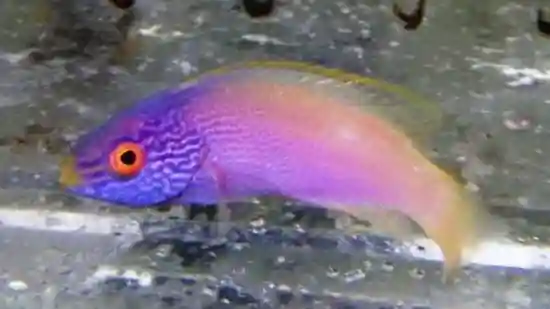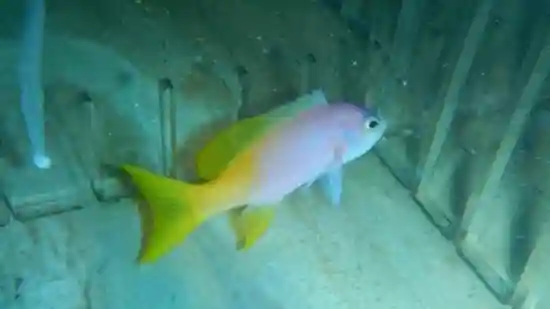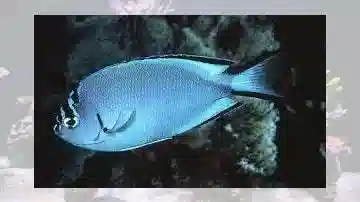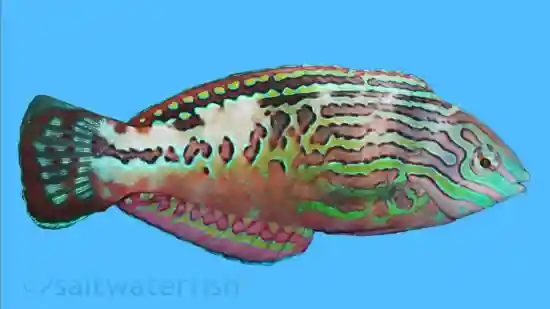Expert Only
Divided Leopard Wrasse
Macropharyngodon bipartitus
(6 Reviews)
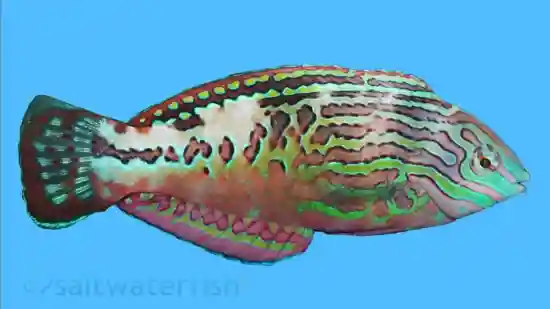
Expert Only
Divided Leopard Wrasse
Macropharyngodon bipartitus
(6 Reviews)
{{ item.name }}
Size: {{ item.extra_field_3 }}
${{ getFormattedPrice(item.saleprice) }} ${{ getFormattedPrice(item.price) }}
To join the waiting list, click here
Free Shipping
With
$199.00
or more in Marine Life.
More details...
Divided Leopard Wrasse Care Facts
| Care Level: | Expert |
|---|---|
| Temperament: | Peaceful |
| Diet: | Carnivore |
| Reef Safe: | Yes |
| Minimum Tank Size: | 50 Gallons |
| Max Size: | 5 inches |
The Divided Leopard Wrasse, Macropharyngodon bipartitus, is a magnificently colored wrasse. The Males body carries a mosaic of oranges, yellows, blues, reds, and greens while the females have a more subdued color with mixed yellows and oranges with blue accents. This Wrasse requires a decent sized sandbed because they will bury themselves in the sand overnight, or when they feel threatened. They are also best kept in an established reef tank with plenty of rockwork. They can be housed with other members of its own species but should be introduced at the same time and before any other larger fish. The Divided Leopard Wrasse is hermaphroditic meaning once a dominant male dies, a large female can morph into a male and assume the position of leadership in a small group. They should be kept in a tank with a tightly closed lid to prevent possible escapes.
Divided Leopard Wrasse (Macropharyngodon bipartitus): A Comprehensive Guide for Saltwater Marine Aquariums
The Divided Leopard Wrasse (Macropharyngodon bipartitus) is a captivating species that can be a prized addition to your saltwater marine aquarium. This guide provides information on the care, characteristics, and compatibility of the Divided Leopard Wrasse within your aquarium.
Habitat and Adaptability of the Divided Leopard Wrasse
The Divided Leopard Wrasse is native to the Indo-Pacific region and is mainly found in coral-rich areas, lagoons, and sandy substrates near the reefs. They thrive in shallow waters with plenty of crevices and hiding spots.
Reef Safe and Compatibility of the Divided Leopard Wrasse
Divided Leopard Wrasses are generally considered reef-safe. They do not pose a significant threat to corals or invertebrates.
Size and Lifespan of the Divided Leopard Wrasse
These wrasses are relatively small, growing to an average length of approximately 5 inches. With proper care, Divided Leopard Wrasses can live for 3 to 5 years, providing long-lasting enjoyment in your marine aquarium.
Diet in Captivity for the Divided Leopard Wrasse
Divided Leopard Wrasses are carnivorous and require a specialized diet. Offer them a diet of high-quality marine flakes, pellets, frozen foods like mysis shrimp and brine shrimp, and occasional live foods to maintain their health and vibrancy.
Aquaculture Availability of the Divided Leopard Wrasse
Aquacultured Divided Leopard Wrasses are not available to hobbyists. They are typically sourced from the wild. Look for sustainably collected options.
Sexual Dimorphism of the Divided Leopard Wrasse
Divided Leopard Wrasses exhibit sexual dimorphism. Males typically have more vibrant colors and longer fins compared to females.
Symbiotic Relationships of the Divided Leopard Wrasse
Divided Leopard Wrasses do not typically form symbiotic relationships with anemones or corals. They are solitary and prefer to forage among the rocks and sand.
Juvenile vs. Adult Coloration of the Divided Leopard Wrasse
Juvenile Divided Leopard Wrasses often display striking blue coloration with intricate patterns, while adult males develop more subdued colors, often with shades of orange or red.
Compatibility with Other Fish of the Divided Leopard Wrasse
Divided Leopard Wrasses are known for their peaceful temperament. However, they can become territorial with other wrasses or fish of similar size and shape.
Temperament and Behavior of the Divided Leopard Wrasse
These wrasses are active swimmers, adding movement and vibrancy to the aquarium. They are not known for aggressive behavior.
Suitable Tank Mates for the Divided Leopard Wrasse
Consider compatible tank mates such as Yellowtail Damselfish (Chrysiptera parasema), Firefish Goby (Nemateleotris magnifica), Royal Gramma (Gramma loreto), Pajama Cardinalfish (Sphaeramia nematoptera), and Six-Line Wrasse (Pseudocheilinus hexataenia).
Tank Requirements for the Divided Leopard Wrasse
A tank with a capacity of 50 gallons or more is suitable for housing Divided Leopard Wrasses. Provide a sandy substrate for them to sift through and live rock structures with hiding spots. A mature tank with ample copepod populations is beneficial.
Water Conditions for the Divided Leopard Wrasse
Maintain the pH level between 8.1 and 8.4. Keep the salinity within the range of 1.023 to 1.025. The recommended temperature range is 75°F to 82°F (24°C to 28°C). A moderate water flow can replicate their natural environment.
Other Common Names of the Divided Leopard Wrasse
The Divided Leopard Wrasse may also be referred to as the Half-and-Half Wrasse and the Blue Star Leopard Wrasse.
Why Choose Divided Leopard Wrasses from Saltwaterfish.com
Selecting Divided Leopard Wrasses from Saltwaterfish.com offers marine enthusiasts the opportunity to introduce a visually captivating and peaceful species to their saltwater marine aquarium. Our commitment to providing healthy and well-acclimated specimens ensures you receive robust and vibrant fish for your aquatic environment. With our extensive experience and dedication to marine life, Saltwaterfish.com is a dependable source for enthusiasts seeking quality marine species.
The Divided Leopard Wrasse's striking appearance, peaceful temperament, and compatibility with reef tanks make it an excellent addition to your saltwater marine aquarium. By adhering to their specific care requirements and considering their compatibility with tank mates, you can enjoy the dynamic presence this captivating marine inhabitant brings to your tank.
Expert Only: Items designated as expert only require special care such as a species specific environment, special diet or care, and an expert level, experienced aquarist. Not for beginners. Expert Only items qualify for our live arrival guarantee only, and are exempt from our extended 8 day guarantee.
Gorgeous
Reviewed by: Scott Olson on April 13, 2025
I really appreciate the complimentary DOA replacement. Fish arrived doa in the bag and they responded quickly with a respectful solution. I think that makes the already stressful process of buying fish a little less difficult.
Reviewed by: Mr Michael Kong on March 26, 2025
Adorable
Reviewed by: Maria Robles on April 17, 2024
Reviewed by: Michelle Kintz on Feb. 19, 2024
Such crazy coloring and eating frozen food from day 1 ????
Reviewed by: John Holmes on Dec. 4, 2023
Reviewed by: Neil Tournoux on July 12, 2023


